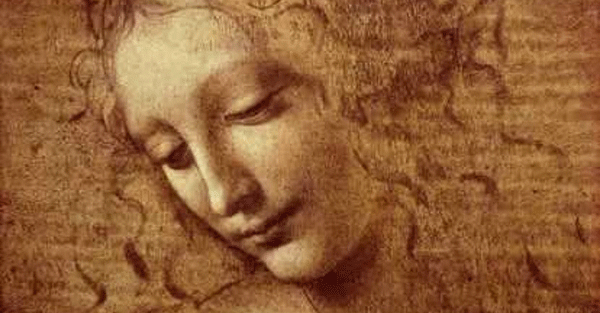October 29, 2014
Region VII, Chile
Among the masterpieces of the Italian Renaissance, Leonardo da Vinci’s “La Scapigliata” stands out distinctly from the rest.
The unfinished painting is of a common woman with disheveled hair. It’s remarkable particularly for depicting not the exceptional, but the real.
Part of da Vinci’s genius was the way he was able to capture life—genuine, unaffected reality, often intense detail. His notebooks reflect the same.
Leonardo, in fact, passed on to posterity great details of his finances. We know, for example, that around the time he painted La Scapigliata in the early 1500s, the great master was living in Milan and earning a salary directly from the king.
Leonardo’s journals state that in a ten-month period, he was paid a total of 240 scudi and 200 florins from the king.
The Italian gold scodo at the time was 3.42 grams of gold, and the florin was 3.54 grams. As of today’s gold price, that adds up to an annualized salary of $72,153.24.
Bear in mind, this was Leonardo’s ‘take home pay’ as there was no income tax, meaning his gross salary in today’s world would be just over $100,000 to account for income tax and FICA.
If we were to extend this analogy even further, given that Leonardo was on the government payroll back then as an artist/engineer, we can look up the US government employee pay scale today.
Da Vinci was an accomplished professional to say the least. His age, experience, and job title in the early 1500s would make him the equivalent of a GS-13 rank today (based on current US government pay scale).
And today’s salary for a GS-13 government worker? You guessed it. Right around $100,000.
It’s incredible how effective precious metals are as a long-term store of value. Even going back over 500 years, we can match up Leonardo da Vinci’s salary as being similar to what he might receive today.
Imagine for a moment that time travel were possible, and Leonardo could transport himself to today’s time—he would still be able to spend those coins. Or at least trade them for currency at the same purchasing power.
Now that is a store of a value. This is the real stuff.
Could you imagine the same if you were transported 500 years into the future? Imagine taking your pieces of paper to people of the future and trying to trade for goods and services.
Our paper today would mean nothing to them.
Today’s currency relies on everyone in the system having confidence in it. Or at least being fooled into having it.
But confidence in fiat money is ebbing away with each passing day.
If you want your money to be worth anything at all for your kids and even for yourself later in life, you’ll want to own real assets—productive businesses, land, and yes, precious metals.
As Leonardo’s story shows, these asset classes have been proven to maintain their value over the centuries.
from SOVEREIGN MAN http://www.sovereignman.com/trends/historical-figures-salaries-in-gold-leonardo-da-vinci-15485/
via IFTTT
